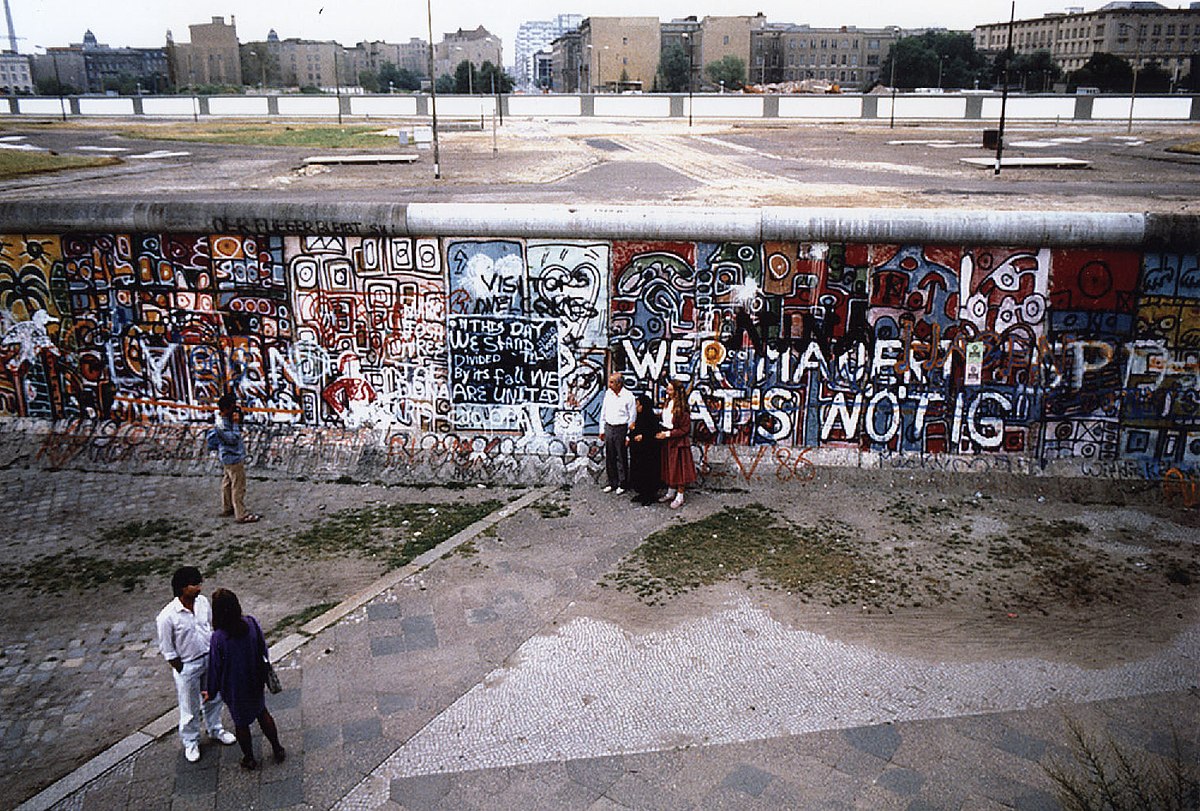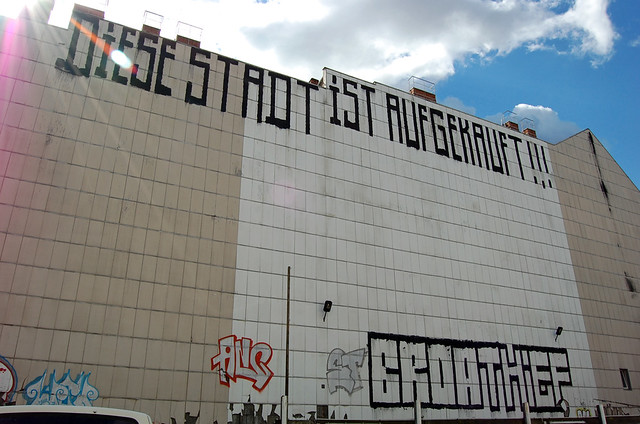It would be a failure to assume that the street art in Berlin is nothing but “rhetorical backdrop”, or remnants of a past cultural disapproval of a divided Germany, as so many people inaccurately infer. Summing up Berlin’s graffiti as a “cultural phenomenon” is unjust to those who have previously dissented against institutional and governmental practice, as well as those who continue to express objection to political and societal convention. Graffiti is “a manifestation of the social and economic processes that have defined and shaped specific urban spaces at specific moments in time,” and is illustrative of an individual opposition, rather than a public body’s artistic urbanity (Pugh 432).

Photo by Nikki Cotton
Month: March 2016
Berlin Wall
The Berlin wall was constructed August 13th, 1961 in an attempt to isolate Western capitalism from Eastern Communism, dividing the city with an Iron Curtain. This sobering structure represented suppression and desolation, an eye sore for the public. It wasn’t until the late 1970’s that the wall became a symbol of economic and political unrest, in response to “suburbanization and economic globalization” (Pugh 421). The socially neglected defaced the barrier in attempt to discredit and invalidate the governmental systems of both the East and West in an effort to bring attention to civil injustice.

By Edmunddantes – Own work, CC BY-SA 3.0, https://commons.wikimedia.org/w/index.php?curid=26476566
East Side Gallery:
–After the Fall
The East Side Gallery is one of the most well-known examples of legal graffiti in Berlin—possibly the world. It was also “one of the earliest official public displays of graffiti art in postwall Berlin.” In 1990, as a celebration of freedom, international artists were invited to paint the wall; the paintings covered nearly a mile of the Eastern part of the wall. In November 1991, the Berlin Senate made the East Side Gallery an official city monument, as it still remains so today. Although it is an official monument, it isn’t very well respected among other graffiti artists, so a lot of free-expression graffiti (meaning illegal graffiti) was painted over the original works. In 2008, many of those original works were restored or repainted for the 20th anniversary of the fall of the wall in 2009. After that, security measures were put in place to protect the murals, preventing illegal graffiti to cover the legal works. Nowadays, the murals from the Gallery are in travel guides, official brochures, and on tourist items such as T-Shirts, postcards, and shopping bags (Preece 127-28).

Photo by Amber Prater
Source of Unrest: The Gentrification of Berlin
Since the beginning of post World War II urban landscapes in Germany, especially Berlin, have been restored, restructured, and redesigned. Manufacturing and industry were originally relocated outside of the city after the war, removing the middle class and leaving the marginalized to inhabit the urban area (Pugh 421). However, with the dawn of globalization, Berlin began to transform yet again, this time with a flux of upper and middle-class inhabitants. The effect of this was that the current residents could no longer afford the higher real-estate cost and increasing rent, and were displaced within the city, specifically the poor and working class. This gentrification was largely due to international corporations, who were responsible for the “increasingly uniform look to the city.” Berlin occupants witnessed this destruction of their past, and felt entirely neglected, considering they were unable to take part in the decision-making process that ultimately determined the character of their home. In response, tenants of these gentrified areas spoke out against urban transformation through large slogans, murals, and illustrations that strove for “visibility in an urban landscape” already “bursting with language and signs.” Graffiti represented an attempt to “attribute distinct features to a transformed urban space that otherwise” lacked identity. This form of protest is still highly active, as Berlin continues to rapidly globalize, gentrification continues. The picture below displays one of Berlin’s longest-lasting illegal graffiti texts: a sign that “declares Berlin’s urban renewal has fallen victim to commercialization.” Scrawled in giant letters, the building reads “Diese stadt ist aufgekauft,” or “this city is bought up” (Preece 130-37).
